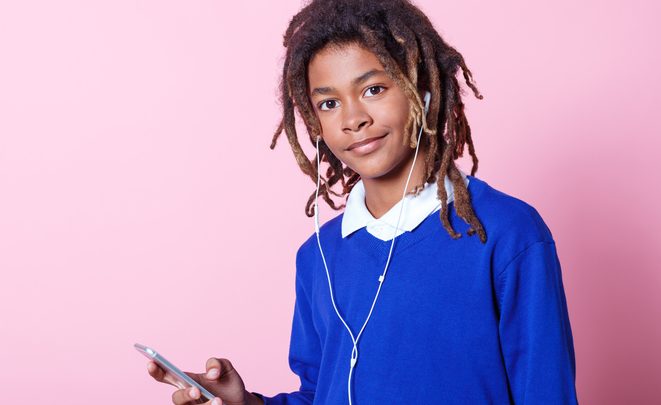Could Edtech Stop Us Teaching to the Test?

Making use of the media they love can help students succeed in English literature, says Emma Slater…

- by Emma Slater

One of the key findings of our last Ofsted inspection report, which rated the school in North Tyneside where I am a lead practitioner as ‘outstanding,’ was that all groups of students in Key Stages 3 and 4, regardless of their backgrounds, make outstanding progress and leave Year 11 with GCSE results well above those found nationally.
We live in an information age, and any reading our students do, is short – often around 200 characters. A survey at showed that most of our students don’t read at all outside of school.
Although it is important for pupils to have a good knowledge of the whole text, success and learning shouldn’t be about memorising quotes; the students also need to understand them.
To really engage students in English literature you have to start with the central plot and stories within the story. The main aim is to ensure the students understand and enjoy the plot, characters and central themes.
When studying the 19th-century texts we make informed choices about when to delve deeper into the writers’ intentions and when to give a lighter touch based on pupils’ attainment and understanding.
I know that if I made some students discuss every page of Dickens, I’d lose them, but for others it’s an important part of securing their deeper understanding and developing crucial study skills.
As English practitioners we are always looking to ensure we are engaging our students in their learning. For subjects such as the sciences it’s possibly easier to do this; getting hands-on with experiments, touching and testing theories.
Added to this, there are numerous enticingly techy resources to support these subjects. In contrast, when it comes to English literature texts there are very few edtech resources, potentially leaving us with the hard copy books as the central learning tool.
We have found that videos are ideal for engrossing our students in the stories. These get the students inspired enough in a key area of the text – character, chapter, setting or context – to start a deeper discussion about the broader and surrounding issues.
The challenge is sourcing the right quality videos on YouTube that illustrate specific learning points, and therefore we invest in an industry standard resource that offers exactly what we need: podcasts (or ‘pods’) from GCSEPod.
By having the right quality video content, I can ensure time in lessons is maximised. Even the most able students need to see the story lines visually to really understand them.
These videos also give the learning an alternative voice; my students hear my voice day in day out, so to listen to audio-visual files instead increases their engagement in the learning objective.
Let’s take Charles Dickens’ A Christmas Carol as an example. By watching videos of the key story lines of Ebenezer Scrooge’s vision of the ghosts and his reaction when he sees ill, Tiny Tim, the children are naturally more engaged in the story.
The video content highlights what the students need to know, but more importantly it provides teachers with a platform for a broader discussion on issues such as morality and the spirit of giving.
I tend to use the literature pods for independent study or at the start of lessons, and we then discuss the content.
By the time they come to read the associated chapter they already have a strong foundation for learning; it’s about giving them the confidence to read the story and igniting each student’s independent willingness to learn.
Equally when I need to teach and develop their contextual knowledge I delve into the history videos to cover additional information about the First World War, life in the trenches or European history.
Using a medium they are familiar with offers a continuity in content and quality that I wouldn’t get if I were to rely on internet videos.
It is my strong belief that today’s technology is ideal for grasping students’ attention in most areas of learning, but for me it’s proven to be ideal for English literature.
My colleagues who use the videos have noticed a significant increase in our students’ interest in, and appreciation of English literature, particularly in our lower attaining boys, who previously would not engage with other forms of independent learning.
These students are now willing to watch the pods at home and school and their results reflect their additional study time.
The audio-visual clips are proving to be the ideal foundation for broader learning. We may use them initially to ‘teach the core aspects of a story’, but it is from here that I can really immerse my students in the finer details.
It’s supporting them to appreciate the beauty of literature and improving results – therefore we are meeting our objectives.
Emma Slater uses GCSEPod’s video ‘pod’s.











